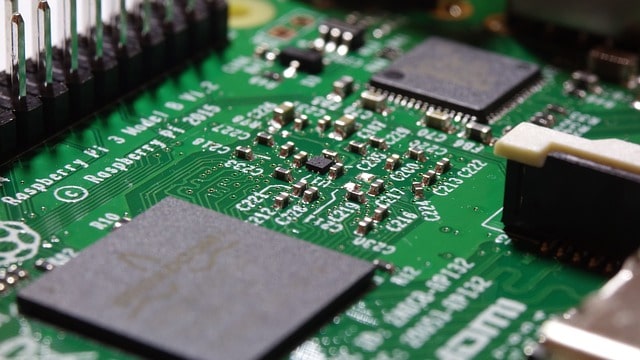
As new year 2022 has started today, JharkhandStateNews studied the change in Information Technology sector in India. The study found that 2021 recorded several path-breaking/ important initiatives.
The following details provide a glimpse of various initiatives of the Ministry during 2021:
- Digital Access to All
- Digital Infrastructure
- Digital Identity: Aadhaar
- Aadhaar is world’s largest digital identity programme that provides biometric and demographic based unique digital identity that can be authenticated anytime, anywhere and also eliminates duplicate & fake identities. It provides an identity infrastructure for delivery of various social welfare programmes.
- As on 31st October, 2021, 126.09 crore [Live] Aadhaar has been issued.
- For providing convenient in Aadhaar enrolment and update services to the people, UIDAI has engaged 2 Service Providers to establish and operate 166 Aadhaar Sewa Kendras (ASKs) in 122 cities across the country as per the revised target. As on 31st October 2021, 57 ASKs have been made operational.
- Digital Delivery of Services
- Common Services Centres (CSCs): CSCs are the world’s largest digital service delivery network, with wide reach in rural areas upto Gram Panchayat & Block level. These information and communication technology enabled kiosks with broadband connectivity has been providing various governments, private and social services to the citizens. 6,467 additional functional CSCs (including urban & rural) were added since 1st January 2020 to 31st October 2020, while, 10,339 functional CSCs were added at Gram Panchayat level.
- Video Conferencing (VC): NIC's VC services are being extensively used by Prime Minister, Union Ministers, Governors, Chief Ministers of States, Cabinet Secretary and Chief Secretaries, Chief Information Commissioner and various other senior officials across country. NIC is also providing web-based desktop videoconferencing services to users of various departments of central government & state governments.
- Virtual Courts
- It aimed at reducing footfalls in the courts by eliminating the physical presence of violator or advocate in the court. Virtual court can be managed by virtual judge whose jurisdiction can be extended to entire state and working hours may be 24X7. Neither litigant need to visit the court nor judge will have to physically preside over the court thus saving precious judicial time.
- Number of judges required for adjudicating traffic challans across the state can be reduced virtually to single judge. eChallans to be submitted in the court are automatically filed to the virtual court for adjudication. Virtual Judge can access the Virtual Court application from anywhere, view the cases and adjudicate the cases online.
- AarogyaSetu: It is a mobile application launched by the Government of India on 2nd April, 2020, to aid the COVID-19 efforts of the Government. The App works based on contact tracing method and helps the Government in identifying, monitoring and mitigating the spread of COVID-19 across the country.
- RT-PCR and Rati Mobile Apps: NIC has developed RT-PCR and Rati Mobile Apps on Android and iOS platforms and a web portal to ensure, quality and accurate data of patients at location for surveillance, immediate transfer of Sample details to ICMR for use by authorized laboratories.
- GST Prime: GST-Prime is a product to help the tax administrators to analyze and monitor the tax collection and compliance within their jurisdiction.GST-Prime improves the GST compliance, increase the tax collection, increase the tax base, detect the tax evasion and fraud and predict the effect of policy change
- e-Taal (Electronic Transaction Aggregation & Analysis Layer): There has been a stupendous growth in Electronic Transactions (e-Transactions) in various e-Governance services. Since, Jan, 2020 to 8th Dec, 2020,around 6,456 crore e-transactions has been recorded and 122 additional e-Services have been integrated with eTaal platform.
- e-District Mission Mode Project (MMP): e-District is a Mission Mode Project (MMP) that aims at electronic delivery of identified high volume citizen centric services at the district or sub-district level. Since 1st January 2020 to 30th November 2020, over 931 e-Services have been recorded for citizens and Rollout has been increased in 15 districts across 33 States/UTs.
- Vehicle Location Tracking System (VLTS): It is designed to track and monitor public vehicles with the help of GPS-based tracking devices which gets fitted in Vehicles. The System also has a provision to send panic alert which triggers emergency response procedure to support passenger in distress with the help of effective monitoring using Command Control Centre (CCC).
- eChallan: A comprehensive traffic management solution using a mobile-based app and complimentary web application which is Integrated with CCTV/ ANPR (Automatic Number Plate Reading) Cameras, RLVD/OSVD (Red Light/ Over Speed Violation) Devices, Later Guns etc for issuance of challan/ notices.
- Electronic Human Resource Management System (eHRMS): eHRMS application is responsible for the maintenance of employee record in electronic form, from hiring to retiring. The project includes scanning/digitization of service book to capture the legacy data and provision of 28 online services through various modules; namely Service Book, Leave, LTC, Personal Information, Reimbursements, Advances, Tour, Helpdesk, etc
- ServicePlus: It is a Meta Data Based e-Service Delivery Framework which helps in making all Government services accessible to the common man in his locality through common service delivery outlets. The framework is successfully running in 33 States/UTs facilitating more than 2,299 Services of Central, State and Local Government.
- Rapid Assessment System (RAS): A continuous feedback system on e-services delivered by Government of India and State Governments. RAS offers Localized Feedback Forms, in 9 languages, i.e. Hindi, Gujarati, Bengali, Kannada, Malayalam, Marathi, Punjabi, Tamil and Telegu. Since 1stJanuary 2020 to 30th November 2020, RAS is integrated with 97 e-Services of 21 DepartmentsPAN India and 3.31 crore feedback requests have been sent.
- Open Government Data (OGD 2.0): The OGD Platform India (https://data.gov.in) has been set-up by the National Informatics Centre (NIC) in compliance with the Open Data Policy (NDSAP) of India. The objective of the policy is to provide proactive access to Government owned shareable data, along with its usage information in open/machine readable format, through a wide area of network across the country, in a periodically updated manner, within the framework of various related policies, rules and acts of the Government. Since 1st January 2020 to 30th November 2020, OGD India have 87,974 dataset resources, 1,118catalogs contributed by 9 Ministry/Departments, over, 242 Visualizations created, 39,112 Application Programming Interfaces (APIs) created. OGD India has 30.40 lakh times viewed and 5.50lakh datasets have been downloaded.
- Global Indices: The E-Government Development Index (EGDI) presents the state of E-Government Development of the United Nations Member States. Along with an assessment of the website development patterns in a country, the E-Government Development index incorporates the access characteristics, such as the infrastructure and educational levels, to reflect how a country is using information technologies to promote access and inclusion of its people. Ministry of Electronics and Information Technology (MeitY) is the nodal ministry for EGDI.
The EGDI is a composite measure of three important dimensions of e-government, namely: online service index, telecommunication infrastructure index and the human capital index.
- The Online Service Index (OSI) measures a government’s capability and willingness to provide services and communicate with its citizens electronically. Ex: Transactional services: income taxes via national websites - MeitY
- The Telecommunication Infrastructure Index (TII) measures the existing infrastructure that is required for citizens to participate in e-government- Department of Telecommunications (DoT)
- The Human Capital Index (HCI) is used to measure citizens’ ability to use e-government services – Department of Higher Education and Department of School Education and Literacy (DoSEL)

